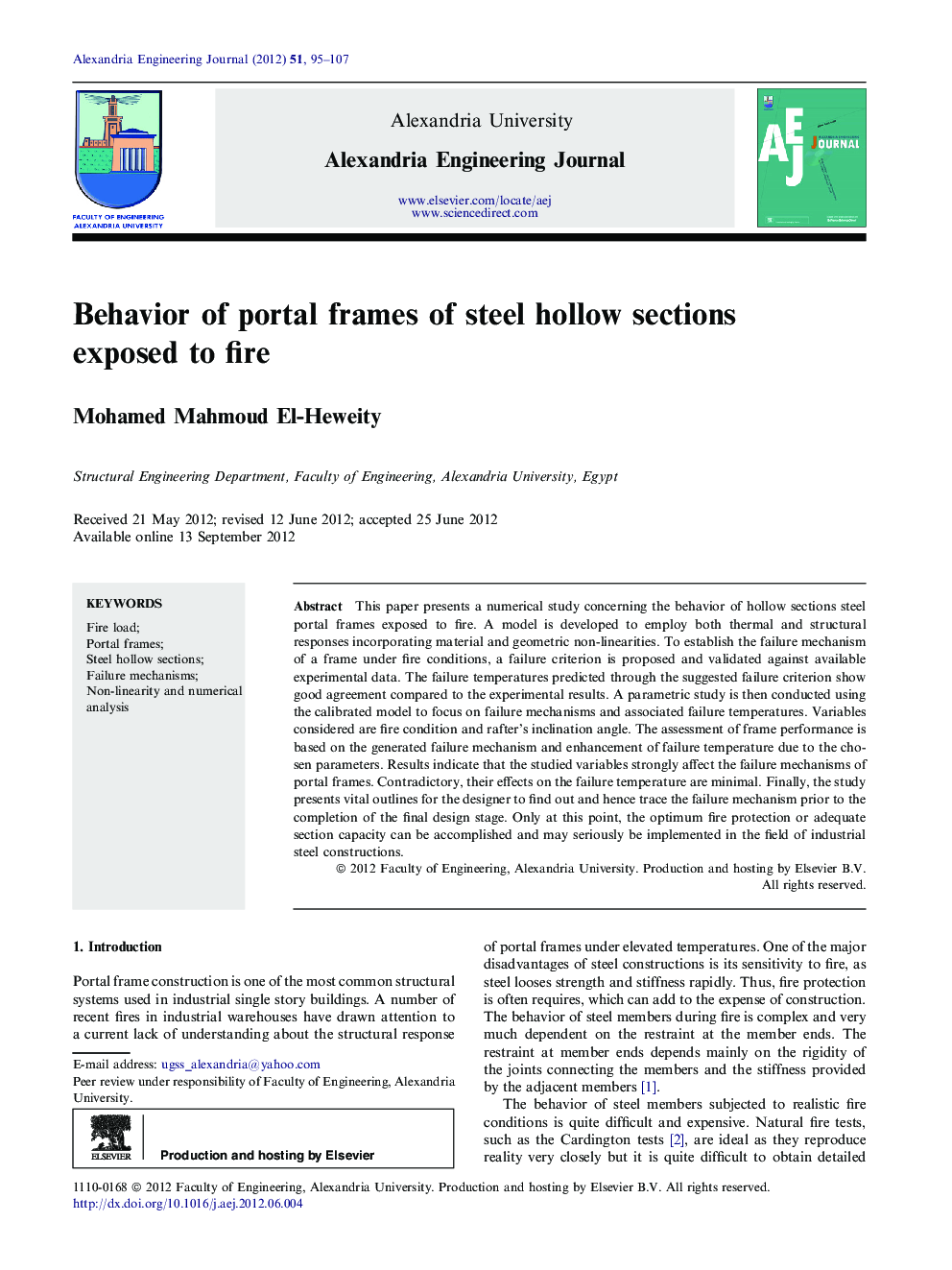| Article ID | Journal | Published Year | Pages | File Type |
|---|---|---|---|---|
| 816413 | Alexandria Engineering Journal | 2012 | 13 Pages |
This paper presents a numerical study concerning the behavior of hollow sections steel portal frames exposed to fire. A model is developed to employ both thermal and structural responses incorporating material and geometric non-linearities. To establish the failure mechanism of a frame under fire conditions, a failure criterion is proposed and validated against available experimental data. The failure temperatures predicted through the suggested failure criterion show good agreement compared to the experimental results. A parametric study is then conducted using the calibrated model to focus on failure mechanisms and associated failure temperatures. Variables considered are fire condition and rafter’s inclination angle. The assessment of frame performance is based on the generated failure mechanism and enhancement of failure temperature due to the chosen parameters. Results indicate that the studied variables strongly affect the failure mechanisms of portal frames. Contradictory, their effects on the failure temperature are minimal. Finally, the study presents vital outlines for the designer to find out and hence trace the failure mechanism prior to the completion of the final design stage. Only at this point, the optimum fire protection or adequate section capacity can be accomplished and may seriously be implemented in the field of industrial steel constructions.
